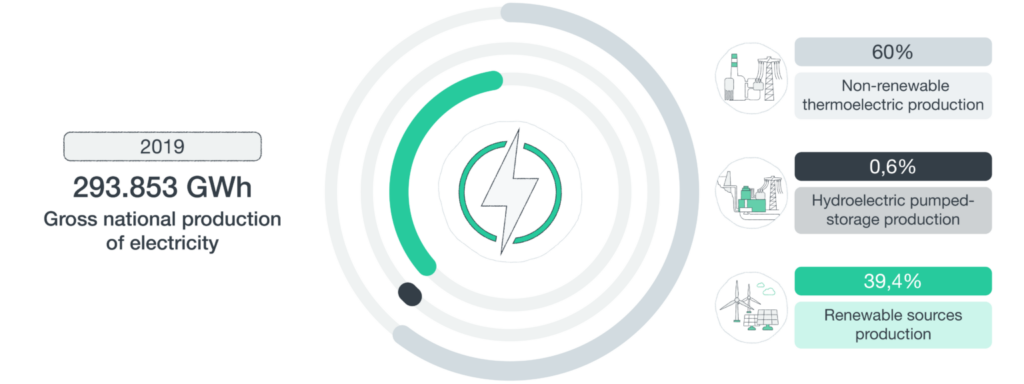The energy market: background and future trends
By Attilio Di Sabato
The historical background.
In Italy, the energy market has a very recent history. It was introduced by Legislative Decree No 79 of 16 March 1999,
known as the Bersani Decree in reference to the Minister in charge, which concluded after several iterations in a final step in the Bersani bis Decree in 2007 and earmarked its final step to liberalise the electricity market.
This Decree implemented the Directive 96/92/EC of the EU Parliament and Council, which established the creation of common rules for the EU single energy market.
Nowadays, the so-called “free” market (where the price is determined based on competitive market dynamics) and the “regulated” market (where the price is determined every 4 months by the competent Authority), a legacy of what existed before the Bersani Decrees, co-exist for Residential Customers, who can choose one or the other at their discretion, while for Micro Enterprises, SMEs and Large Enterprises there is only the option of being supplied in the free market structure starting from January 1, 2021. The ‘Major Protection Service’ ceased for them, a system which ceases the ‘regulated services’.
For households, the transition to the Free Market will be complete in 2023, with the elimination of the “regulated” service known as maggior tutela (major protection).
The main differences between the two markets are that, in the Free Market, customers are “free” to choose their supplier, and each supplier establishes a price based on the demand and the offer on the “Power Exchange”, where energy is bought and sold “wholesale”.
The numbers
Before continuing our journey into the Italian energy market, we want to share some useful numbers to give you a general idea of the sector.
In 2019, gross national production of electricity was 293,853 GWh per year, distributed among sources as follows:

However, the electricity demand was 319,622 GWh, meaning that domestic production covered only 88.1% of domestic demand, the remaining part was imported from abroad ¹.
In 2019, the number of operators in the Energy Distribution sector, which manage the Medium and Low Voltage network in public concession, up to every single User’s meter, was 127, while the number of sellers was 723.
The free market represents 52.1% of final customers, and consequently, the market for major protection (where the price is periodically determined by the Public Decider) reaches 47.7% of final customers ².
The Structure
Let’s take a step back: how do sellers of electricity negotiate the raw material mentioned? Through the “wholesale” electricity market were resembling a real “stock exchange” where Authorised Operators buy and sell large quantities of electricity daily.
The statutory corporation which manages and guarantees the operation of this “Energy Exchange ” is the GME, Gestore dei Mercati Energetici (Italian Power Exchange).
Not only is the GME responsible for the electricity market, but also the natural gas market and the environmental market.
While for the first two markets it is easy to guess the purpose of the traded material, for the third one it is necessary to elaborate a little. In the Market for the Environment several sectors are covered, such as the Green Certificates Market, the Energy Efficiency Certificates Market (MTEE), and the CO-FER Certification Market.
How it works
Let’s focus on the Electricity Market, which is divided into:
- The Spot Electricity Market, which in turn is divided into the Day-Ahead Market (MGP), the Intra-Day Market (MI) and the Ancillary Services Market (MSD).
The main feature of this market is the extremely narrow time interval, i.e. “daily”. It is important to highlight that the main shares of energy sold are settled at a certain price the day before the actual delivery, which explains the name “Day-Ahead Market”.
- Energy futures market
This market type enables the trading of energy shares over more extended time horizons than the daily ones offered by the Spot Market.
- A platform for the physical delivery of financial contracts concluded on the IDEX
- Forward Electricity Account Trading Platform (PCE)
Through the Electricity Market, therefore, it is possible to negotiate electricity electronically at the wholesale level. From this trading comes the energy price, i.e. the balance price obtained from the encounter between the electricity price demand and the price offered by the operators. This allows the electricity supply and withdrawal schedules to be defined according to competitive market logic.
What will happen in the future?
How is the energy market going to change in the future? Most likely, the increase of installed capacity of renewable energy sources, together with the growing number of prosumer, will influence the energy market leading to new market mechanisms more open to final users.
